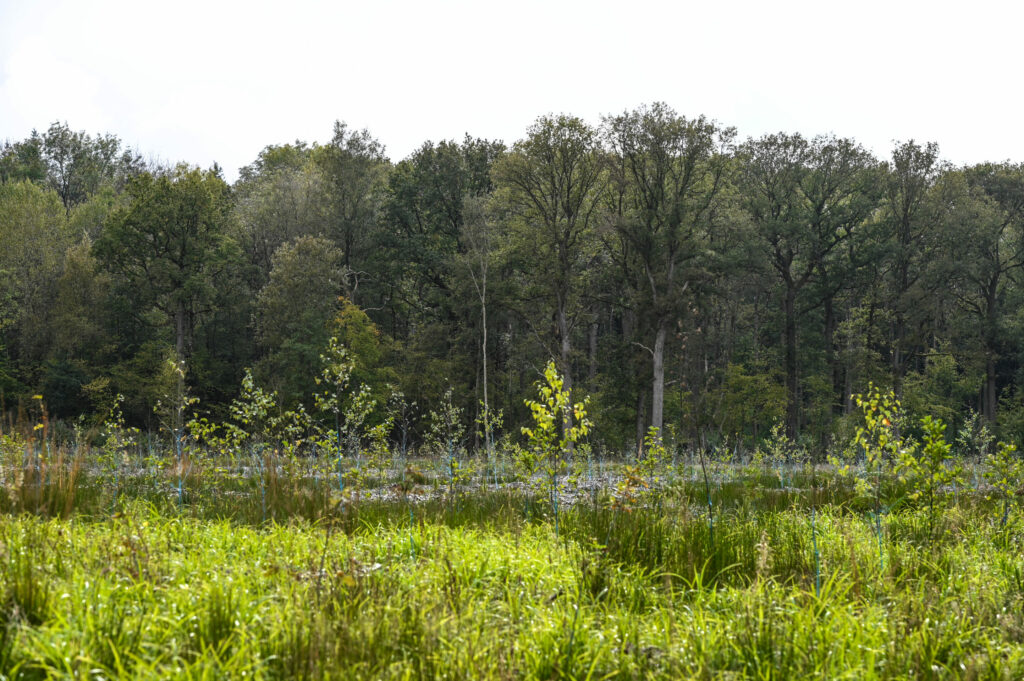This year, many 20 or 24-year forest management plans are coming to an end, pushing many local authorities in Wallonia to renew their plans to ensure forests remain diversified, allowing a range of activities to coexist there.
A forest management plan determines which trees to plant and where. The aim is to preserve biodiversity, ensure the forest's role as a place for hunting and walking, and provide an income for the municipalities that harvest the wood from their forests. These are some of the many services provided by forests, and it must be ensured that they remain in balance.
Namur adopted its forest management plan on 16 April and Gembloux adopted its plan on 15 March. This year, around ten local authorities (including Viroinval, Profondeville, Eghezée, etc.) throughout the province of Namur are renewing their forest management plans, with the DNF (Department of Nature and Forests) outlining the broad lines in dialogue with the municipality.
The city of Namur, for example, wanted nearly 30% of its woodland (whereas Wallonia imposes only 3%), that is 91 hectares, to become a 'strict biological reserve' for 30 years. Some local authorities in the Ardennes need the income generated by forestry exploitation. The DNF will also take that into account, avoiding over-exploitation.
'Two main concerns: biodiversity and global warming'
The first major change was the coming into effect of the new Forestry Code in 2008, modernising the original 1854 version, which focused primarily on the economic aspects of timber production.
RTBF spoke to Michel Baullij, Director of the Natural Resources Directorate of the DNF. He explains that the two factors that influence the development of a tree are the soil and the climate. Previously, these were invariable factors. Now, while the soil remains constant, the climate is changing.
"Compared with the past, we now have two main concerns: biodiversity and global warming, which is forcing us to reassess the way we think about forest management by taking risks into account (droughts, fires, more insect attacks). Whereas in the past we used to plant large areas of a single species, today we're moving towards a mixture of species. We now use four or five different species to ensure resistance, robustness and biodiversity," Baullij said.
"We really want to ensure that our children and grandchildren still have a diversified forest. We can observe that forests are quite significantly suffering from global warming, so we're paying very close attention," he continued. "We are implementing more dynamic management plans. We are also planting fewer trees than we used to. We also allow the forest to regenerate naturally."
'Forests multi-functionality'
Local authorities in the Namur provinces such as Viroinval, with 6,300 hectares of woodland, and Eghezée, with 44 hectares, have different expectations from their forests.
"Forests in urban communities such as Namur, where there is a strong demand from the public for walks, or in more agricultural communities such as Eghezée, where the focus will be more on welcoming the public, will not be managed in the same way as a forest in the Ardennes, which has a tremendous area of forest and expects a certain financial return from its forest in order to ensure its communal policies."
As a public service, the DNF is trying to ensure that all these forest functions are maintained."Multifunctionality is a good summary. Forests provide a multitude of services; a variety of stakeholders must coexist within it."
Some communes have opted for a more educational approach and want to raise public awareness of the role of forests. Baullij explained that people living in more urban areas "only know the forest from its recreational side. Due to a lack of knowledge on what forest is, they can be dismayed by activities such as hunting or forestry exploitation."

